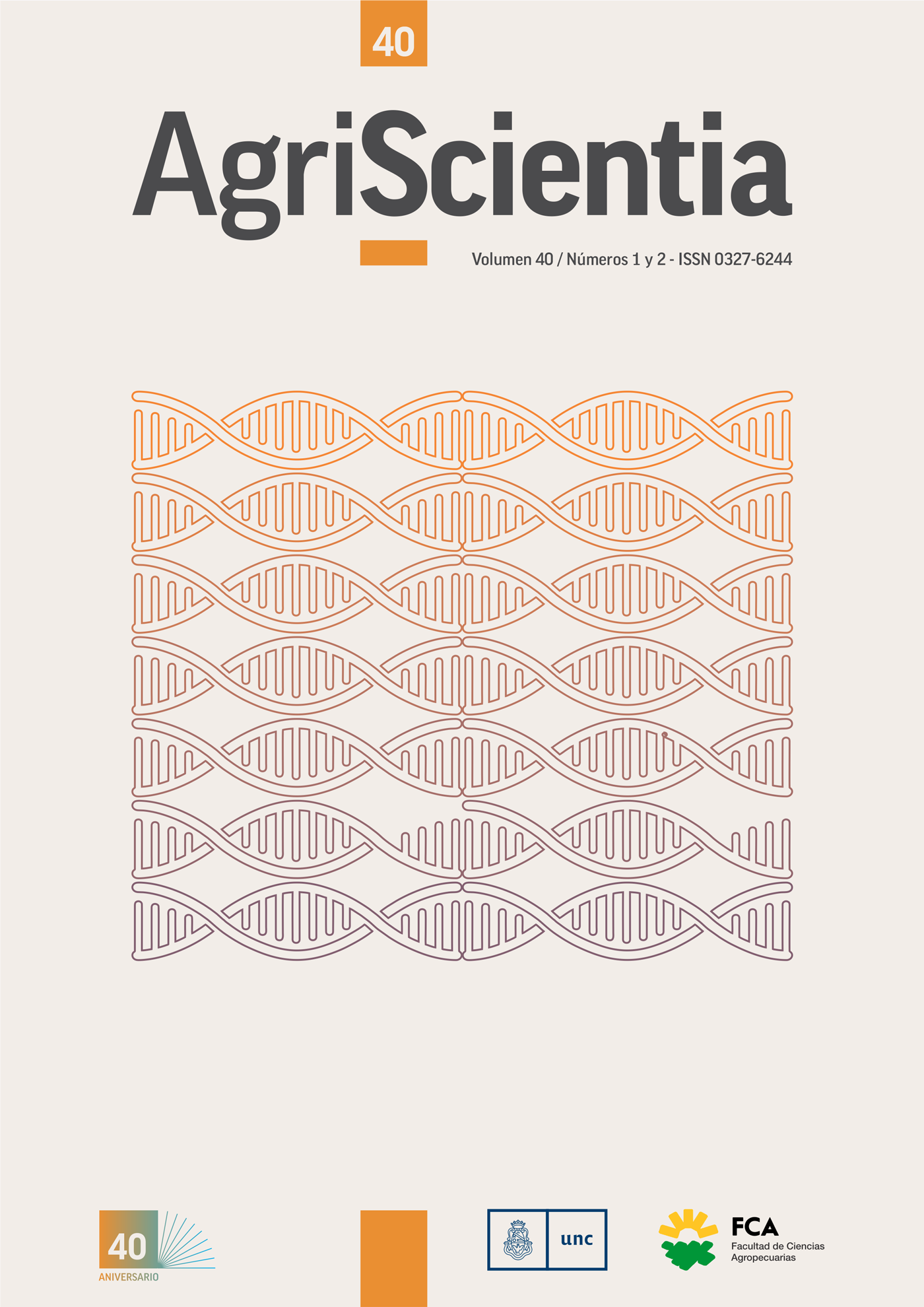Protocol for automating climatic data download from the cloud and generating biometeorological indicators for crop epidemiological monitoring
Main Article Content
Abstract
Climate variables data derived from satellite imagery or products available in the cloud have wide coverage in space and time, good accuracy, and are generally freely accessible. However, obtaining and downloading climate variables at different spatial and temporal scales is limited by the lack of standardized computational procedures. The objective of this study was to develop a computational code to facilitate handling satellite images in order to derive climatic variables for a given spatiotemporal domain. The climate data was obtained from ERA5, a Copernicus Climate Change Service product. The protocol includes data download from the Google Earth Engine platform with a code developed in R language. The protocol developed includes statistical preprocessing of climatic data at fortnightly and/or monthly scale. By combining satellite-derived products with agronomic knowledge about a crop, climate data
can be converted into biometeorological variables and used for spatiotemporal monitoring of crops. The process developed was validated by joint data from biometeorological variables at each site of an epidemiological study which has been monitoring two viruses for 15 years. The protocol may be applied to other satellite products using spatial data.
Downloads
Article Details

This work is licensed under a Creative Commons Attribution-ShareAlike 4.0 International License.
References
Aybar, C., Wu, Q., Bautista, L., Yali, R. y Barja, A. (2020). rgee: An R package for interacting with Google Earth Engine. Journal of Open Source Software, 5(51), 2272. https://doi.org/10.21105/joss.02272 DOI: https://doi.org/10.21105/joss.02272
Gorelick, N., Hancher, M., Dixon, M., Ilyushchenko, S., Thau, D. y Moore, R. (2017). Google Earth Engine: Planetary- scale geospatial analysis for everyone. Remote Sensing of Environment, 202, 18–27. https://doi.org/10.1016/j.rse.2017.06.031 DOI: https://doi.org/10.1016/j.rse.2017.06.031
Gosling, S. N., Bryce, E. K., Dixon, P. G., Gabriel, K. M. A., Gosling, E. Y., Hanes, J. M., Hondula, D. M., Liang, L., Bustos Mac Lean, P. A., Muthers, S., Nascimento, S. T., Petralli, M., Vanos, J. K. y Wanka, E. R. (2014). A glossary for biometeorology. International Journal of Biometeorology, 58(2), 277–308. https://doi.org/10.1007/s00484-013-0729-9 DOI: https://doi.org/10.1007/s00484-013-0729-9
Hu, Z., Hu, Q., Zhang, C., Chen, X. y Li, Q. (2016). Evaluation of reanalysis, spatially interpolated and satellite remotely sensed precipitation data sets in central Asia. Journal of Geophysical Research: Atmospheres, 121(10), 5648–5663. https://doi.org/10.1002/2016JD024781 DOI: https://doi.org/10.1002/2016JD024781
Muñoz-Sabater, J., Dutra, E., Agustí-Panareda, A., Albergel, C., Arduini, G., Balsamo, G., Boussetta, S., Choulga, M., Harrigan, S., Hersbach, H., Martens, B., Miralles, D. G., Piles, M., Rodríguez-Fernández, N. J., Zsoter, E., Buontempo, C. y Thépaut, J.-N. (2021). ERA5-Land: a state-of-the-art global reanalysis dataset for land applications. Earth System Science Data, 13(9), 4349–4383. https://doi.org/10.5194/essd-13-4349-2021 DOI: https://doi.org/10.5194/essd-13-4349-2021
Noce, S., Caporaso, L. y Santini, M. (2020). A new global dataset of bioclimatic indicators. Scientific Data, 7(1), 398. https://doi.org/10.1038/s41597-020-00726-5 DOI: https://doi.org/10.1038/s41597-020-00726-5
Pebesma, E. (2022). stars: Spatiotemporal Arrays, Raster and Vector Data Cubes. DOI: https://doi.org/10.1201/9780429459016-6
R Core Team. (2021). R: A Language and Environment for Statistical Computing (4.1.2). https://www.r-project.org/
Tennekes, M. (2018). tmap : Thematic Maps in R. Journal of Statistical Software, 84(6). https://doi.org/10.18637/jss.v084.i06 DOI: https://doi.org/10.18637/jss.v084.i06
Ushey, K., Allaire, J. J. y Tang, Y. (2022). reticulate: Interface to “Python”.
Wickham, H. (2016). ggplot2: Elegant Graphics for Data Analysis. Springer-Verlag New York. DOI: https://doi.org/10.1007/978-3-319-24277-4
Wosula, E. N., Tatineni, S., Wegulo, S. N. y Hein, G. L. (2017). Effect of temperature on wheat streak mosaic disease development in winter wheat. Plant Disease, 101(2), 324–330. https://doi.org/10.1094/PDIS-07-16-1053-RE DOI: https://doi.org/10.1094/PDIS-07-16-1053-RE
Yim, Y. y Kira, T. (1975). Distribution of forest vegetation and climate in the Korean peninsula: I. distribution of some indices of thermal climate. Japanese Journal of Ecology, 25(2), 77–88. https://doi.org/10.18960/seitai.25.2_77





